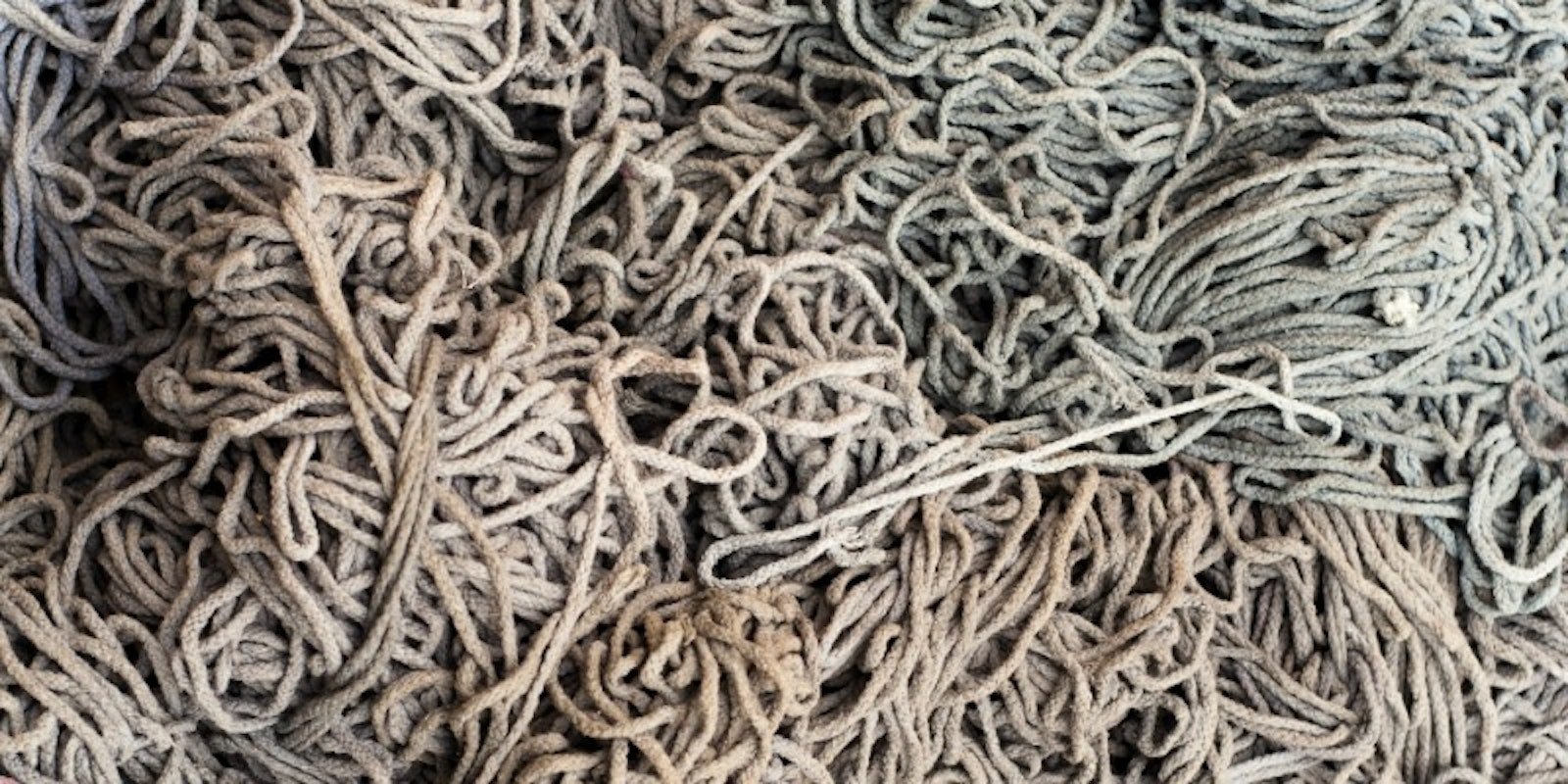Is your yarn studio getting out of control? Slowly taking over your house? Then you’ll want to read this essay by Interweave Founder Linda Ligon from the September/October 1994 issue of Handwoven *on yarn storage organization. It might not help you organize your studio, but it will probably make you laugh. —Christina *
You can organize your yarn by color, which can be very pretty, or by fiber, or by grist, or by what kind of thing you planned to make out of it when you first purchased it, if you can remember. You can organize it by quantity (enough to make a blanket vs. enough to make a warp for a small towel). You can even sort according to how much weaving time might be required of any given lot and thus integrate your yarn management into a larger time management program, if you're so inclined. Or organize it by how each yarn unit is organized: put all the spools together, and all the cones, and perhaps hang all the skeins in artistic bundles.
You can store it on shelves (open or closed), in ice cream tubs or fancy wire bins, in handmade baskets or old plastic laundry baskets or fruit crates. You may not store it in various boxes neatly covered with wallpaper left over from your kitchen or with self-sticking shelf paper so they will all match; the time making the boxes presentable would be much better spent weaving, or at least thinking about weaving.
Yarn balls are a bit like rabbits or tribbles: If you leave them alone for too long you end up with more than you can handle.
The little odd bits left over from actually making something can go in shoe boxes or plastic storage trays or egg cartons (if they're really little). Thrums are something else again because while their individual elements are little, they often add up to rather large wads. You can chain them if they're long, since they might sometime make a short warp for a little bitty loom that you might someday own, or put them in old transparent bread sacks or tidy Ziploc bags, or secure them with rubber bands and toss them casually into a thrums basket.
Maybe you could even organize your yarn chronologically according to when you bought it; this would lend itself to plans about using up the old stuff first. It would also be nostalgic and offer insights into personal and social history (such as that shade of green!).
If you don't have a single location to keep all your yarn in, but rather spread it around the house in a drawer or closet here, an under-the-bed storage container there, then by all means consider organizing it according to that which you really, really plan to use soon and that which will not be required in this lifetime. Or alternatively, by that which is very pretty and an inspiration to look at, and that which is ugly beyond any recollection of why you bought it in the first place (which very likely intersects with the chronological method).
All these suggestions are only the tip of the iceberg when it comes to storage. We will not talk about grease fleece, washed fleece, tops, rolags, punis, Unters, mawatas, and especially-interesting dryer lint, for many of the yarn storage schemes apply to these items as well. But you must also deal with small tools, such as all the reed hooks which are not your favorite one, and the bobbins that flop or bind, as well as the bobbins that still have a very great deal of very fine yarn from a very-long ago project left on them, which must be wound off if you're to use that bobbin again, and then what will you do with the yarn.
There are also workshop notes, planning notebooks, journals of your creative growth, clippings from old fashion magazines that show capes and suits that actually could be woven using yarn that you actually own, if you wanted to, and photographs from old calendars that have wonderful color sequences to be emulated (except that you'd have to buy more yarn, or take up dyeing). There are yarn samples that need to be categorized according to whether they are or are not obsolete and, if the latter, whether they are or are not useful for color inspiration or for keeping a young child happy on a rainy afternoon, if you happen to get a young child around and the television happens to blow up.
And what about the magazines?
I know a true story about a wise Osage Indian woman in northeastern Oklahoma, a wealthy widow whose very large home was simply packed with a great many interesting things (though they had nothing to do with weaving). When she died, her instructions were that the bulldozers should come knock the house and all its contents down and bury the lot. And it was done. Whether this has to do with taking it with you, or not taking it with you, or with creating a twentieth-century Indian burial mound to confound future archaeologists, is moot. It has merit.
—Linda Ligon

